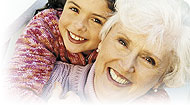Penn Herb Wellness Guide
Risk Factors for Osteoarthritis

Osteoarthritis is a common disease that develops when linings of joints fail to maintain normal structure, leading to pain and decreased mobility. It is associated with aging and injury (it used to be called “wear-and-tear” arthritis) and can occur secondary to many other conditions. However, in most cases its true cause remains unknown.
Osteoarthritis Prevention and Options
Age
Osteoarthritis risk increases with age,1 probably because of the cumulative effects of physical stresses and other factors.2Bone Density
Decreased bone density may allow small fractures to occur to bone underneath the joints, which increases the stress to that joint and predisposes it to arthritic degeneration.3 Protecting bone density with osteoporosis risk reduction strategies (see osteoporosis) may also protect against osteoarthritis.Cholesterol (High)
People with high blood cholesterol levels are more likely to have osteoarthritis, and this relationship appears to be independent of increases in body weight.4 The mechanism involved is not yet clear, though animal studies have found a relationship between cholesterol-raising fats in the diet and the development of osteoarthritis.5 Whether dietary fat or high blood cholesterol is a direct cause of osteoarthritis remains a question that must be answered by additional research. Reducing high blood cholesterol by lowering dietary saturated fat and cholesterol will have many health benefits aside from possible osteoarthritis risk reduction. (See High Cholesterol for information about lowering cholesterol levels.)Exercise and Work Activities
Exercise can be either beneficial or detrimental to joint health, depending on the type, frequency, and intensity of the exercise, and depending on certain characteristics of the joints themselves.6 Sports that cause repeated high levels of impact to joints or require twisting around the joint while it bears weight can cause damage to the joint tissue that can lead to osteoarthritis. These include most weight-bearing contact sports, such as football and soccer, and strenuous endurance sports, such as marathon running and weight lifting. People with abnormal joint anatomy, loose joints, or previous injury may also have increased risk of osteoarthritis from exercise. However, regular moderate exercise within safe limits is beneficial to joint health. Some types of work activities, such as repeated heavy lifting,7 knee bending,8 or use of grip strength,9 may increase osteoarthritis risk. People who are concerned about the effect of exercise or work activities on their risk of osteoarthritis should consult a knowledgeable healthcare professional.Family History
Some families with rare types of osteoarthritis clearly have risks that are genetic.10 Studies have also found more common types of osteoarthritis in some families compared to others, and this suggests genetics may control some of this risk as well.11 People with family history of osteoarthritis should avoid injury, obesity, and other sources of excessive physical stress to their joints.Gender
Osteoarthritis is more common among women. This may be due, in part, to the greater percentage of overweight older women compared to men, but there also appears to be a distinct risk related to gender alone.12Hormone Therapy
Research on the relationship between use of estrogen medications and osteoarthritis is inconsistent and conflicting. While oral contraceptives are not related to osteoarthritis risk, estrogen replacement therapy has been shown to either increase13 or decrease14,15 osteoarthritis risk. Before deciding to use hormone therapy, women should discuss its risks and benefits with a qualified health professional .Injury
Injury to a joint often increases the risk for osteoarthritis in the same area. This has been shown for injuries to the hip,16,17 knee,18,19 and ankle.20 Injuries to the joints should be cared for with the help of knowledgeable health professionals in order to optimize healing and prevent long-term problems, including osteoarthritis.Obesity
Obesity is a risk factor for osteoarthritis of weight bearing joints, such as the hip20 and knee,22,23,24and non-weight-bearing joints such as the hands.25 Long-term weight control will have many health benefits, including reducing osteoarthritis risk.Osteoporosis
Decreased bone density may allow small fractures to occur to bone underneath the joints, which increases the stress to that joint and predisposes it to arthritic degeneration.26 Protecting bone density with osteoporosis risk reduction strategies (see osteoporosis) may also protect against osteoarthritis.Race
Race may be responsible for small differences in osteoarthritis risk. Black women, but not men, were found in one study to have higher risk than Caucasians even when weight and physical stresses were factored out,27 though other studies have not found an increased risk among blacks.28 Joint-replacement surgery for hip osteoarthritis was more common among Caucasians than Asians in another study,29 suggesting a reduced risk among Asians. Related research has suggested that the reduced risk of osteoarthritis among Japanese compared to Caucasians might be due to differences in joint anatomy.30 More research is needed to better understand genetic risks for osteoarthritis.References
1. Tepper S, Hochberg MC. Factors associated with hip osteoarthritis: data from the First National Health and Nutrition Examination Survey (NHANES-I). Am J Epidemiol 1993;137:10818.
2. Kirkwood TB. What is the relationship between osteoarthritis and ageing? Baillieres Clin Rheumatol 1997;11:68394.
3. Terauchi M, Shirakura K, Katayama M, et al. The influence of osteoporosis on varus osteoarthritis of the knee. J Bone Joint Surg Br 1998;80:4326.
4. Sturmer T, Sun Y, Sauerland S, et al. Serum cholesterol and osteoarthritis. The baseline examination of the Ulm Osteoarthritis Study. J Rheumatol 1998;25:182732.
5. Wilhelmi G. Potential effects of nutrition including additives on healthy and arthritic joints. I. Basic dietary constituents. Z Rheumatol 1993;52:1749 [in German].
6. Buckwalter JA, Lane NE. Athletics and osteoarthritis. Am J Sports Med 1997;25:87381 [review].
7. Coggon D, Kellingray S, Inskip H, et al. Osteoarthritis of the hip and occupational lifting. Am J Epidemiol 1998;147:5238.
8. Anderson JJ, Felson DT. Factors associated with osteoarthritis of the knee in the first national Health and Nutrition Examination Survey (HANES I). Evidence for an association with overweight, race, and physical demands of work. Am J Epidemiol 1988;128:17989.
9. Chaisson CE, Zhang Y, Sharma L, et al. Grip strength and the risk of developing radiographic hand osteoarthritis: results from the Framingham Study. Arthritis Rheum 1999;42:338.
10. Yoo K, Origitano TC. Familial cervical spondylosis. Case report. J Neurosurg 1998;89:13941.
11. Cooper C, McAlindon T, Snow S, et al. Mechanical and constitutional risk factors for symptomatic knee osteoarthritis: differences between medial tibiofemoral and patellofemoral disease. J Rheumatol 1994;21:30713.
12. Davis MA, Ettinger WH, Neuhaus JM, et al. Sex differences in osteoarthritis of the knee. The role of obesity. Am J Epidemiol 1988;127:101930.
13. Sandmark H, Hogstedt C, Lewold S, et al. Osteoarthrosis of the knee in men and women in association with overweight, smoking, and hormone therapy. Ann Rheum Dis 1999;58:1515.
14. Hart DJ, Doyle DV, Spector TD. Incidence and risk factors for radiographic knee osteoarthritis in middle-aged women: the Chingford Study. Arthritis Rheum 1999;42:1724.
15. Felson DT, Nevitt MC. The effects of estrogen on osteoarthritis. Curr Opin Rheumatol 1998;10:26972 [review].
16. Cooper C, Inskip H, Croft P, et al. Individual risk factors for hip osteoarthritis: obesity, hip injury, and physical activity. Am J Epidemiol 1998;147:51622.
17. Tepper S, Hochberg MC. Factors associated with hip osteoarthritis: data from the First National Health and Nutrition Examination Survey (NHANES-I). Am J Epidemiol 1993;137:10818.
18. Gillquist J, Messner K. Anterior cruciate ligament reconstruction and the long-term incidence of gonarthrosis. Sports Med 1999;27:14356 [review].
19. Roos H, Lauren M, Adalberth T, et al. Knee osteoarthritis after meniscectomy: prevalence of radiographic changes after twenty-one years, compared with matched controls. Arthritis Rheum 1998;41:68793.
20. Gross P, Marti B. Risk of degenerative ankle joint disease in volleyball players: study of former elite athletes. Int J Sports Med 1999;20:5863.
21. Cooper C, Inskip H, Croft P, et al. Individual risk factors for hip osteoarthritis: obesity, hip injury, and physical activity. Am J Epidemiol 1998;147:51622.
22. Hart DJ, Doyle DV, Spector TD. Incidence and risk factors for radiographic knee osteoarthritis in middle-aged women: the Chingford Study. Arthritis Rheum 1999;42:1724.
23. Sandmark H, Hogstedt C, Lewold S, et al. Osteoarthrosis of the knee in men and women in association with overweight, smoking, and hormone therapy. Ann Rheum Dis 1999;58:1515.
24. Anderson JJ, Felson DT. Factors associated with osteoarthritis of the knee in the first national Health and Nutrition Examination Survey (HANES I). Evidence for an association with overweight, race, and physical demands of work. Am J Epidemiol 1988;128:17989.
25. Felson DT, Chaisson CE. Understanding the relationship between body weight and osteoarthritis. Baillieres Clin Rheumatol 1997;11:67181 [review].
26. Terauchi M, Shirakura K, Katayama M, et al. The influence of osteoporosis on varus osteoarthritis of the knee. J Bone Joint Surg Br 1998;80:4326.
27. Anderson JJ, Felson DT. Factors associated with osteoarthritis of the knee in the first national Health and Nutrition Examination Survey (HANES I). Evidence for an association with overweight, race, and physical demands of work. Am J Epidemiol 1988;128:17989.
28. Jordan JM, Linder GF, Renner JB, et al. The impact of arthritis in rural populations. Arthritis Care Res 1995;8:24250.
29. Oishi CS, Hoaglund FT, Gordon L, et al. Total hip replacement rates are higher among Caucasians than Asians in Hawaii. Clin Orthop 1998;Aug (353):16674.
30. Yoshimura N, Campbell L, Hashimoto T, et al. Acetabular dysplasia and hip osteoarthritis in Britain and Japan. Br J Rheumatol 1998;37:11937.
Copyright 2026 TraceGains, Inc. All rights reserved.


